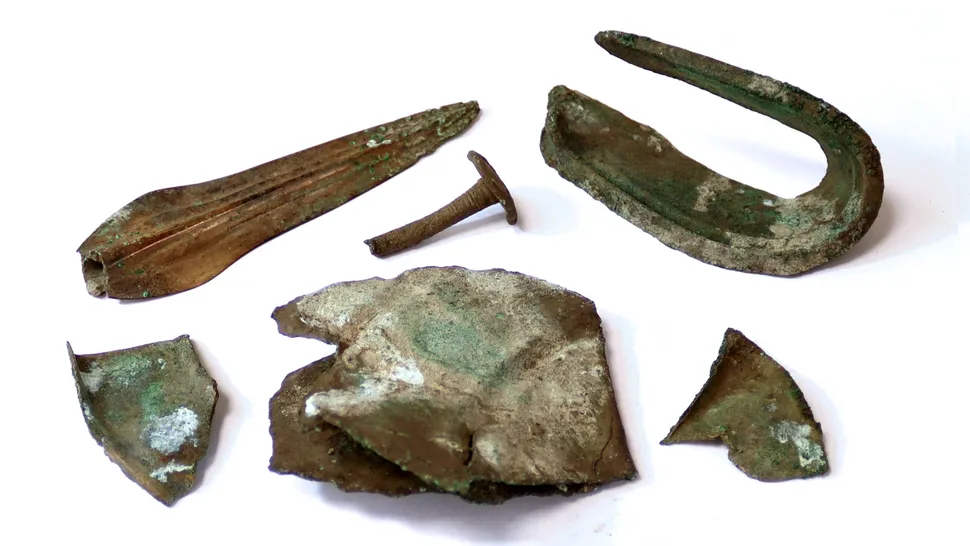While body armor remains a prevalent topic in today’s defense sector, as well as being the central focus for BodyArmorNews.com, it was also important for ancient people groups. Archaeologists have uncovered unique, unusual fragments of bronze armor near Brno, in the Czech Republic. These pieces date from the Late Bronze Age (approx. 1600-1200 B.C.), a period contemporaneous with the era of the alleged Trojan War and many other major societal changes in the broader Mediterranean region.
Discovering the Armor
The discovery of the ancient armor was made in 2023 by metal detectorists, who found a collection of objects containing a spearhead, a sickle, a needle, and several copper fragments. After being analyzed by archaeologists, they confirmed that the objects appear to have been intentionally damaged and buried together. Initially it was proposed that this was possibly as part of a ritual practice. However, after further inquiry, experts realized that one unique folded piece was, in fact, part of a chest plate.
Using 3-D scanning and microscopy, researchers were able to smoothen the bent bronze plate digitally, reconstructing its shape and decorative features. The ornamentation visible under microscopic inspection confirmed it was once used for personal protection, aligning with other artifacts of similar nature.
Bronze armor is somewhat rare, as organic materials degrade or corrode, and metals were often melted down for reuse by ancient people. Because of the lack of finds, each discovery of this type is valuable. This is only the second time that armor of these characteristics has been found in modern-day Czechia.
The find also offers insight into social stratification, warfare, ritual behavior, and craft production in Central Europe during the Bronze Age. Elite warriors at the time seem to have had access to metal body protection, while less privileged fighters apparently relied on less durable organic protection, which seldom survives in the archaeological record.
What Ancient Greek Armor Teaches Us: The Dendra Suit
Comparatively, researchers have recently re-examined other Greek armor, especially the famous Dendra armor (from circa. 3,500 years ago), for its actual protective qualities. In a previous report is cited on BodyArmorNews.com, we discuss replicas of the full Mycenaean armor (including a boar’s-tusk helmet and bronze plate components) worn by 13 marines in an 11-hour simulated battle. The simulation attempted to mimic the environmental conditions and combat scenarios described in sources like Homer’s Iliad.
This Mycenaean armor, once thought by some to be largely ceremonial, held up under sustained physical stress. The participants carried out various combat tasks, such as duels, spear thrusts, movement, etc., while wearing replicas, and the armor did not prove to be overly cumbersome. It offered real protection and was sustainable in a martial context.
Connecting the Dots & Implications
Putting both of these cases together helps us understand and contextualize Bronze Age armor in Europe. The Czech find illuminated the geographical reach of metal armor in the Late Bronze Age beyond the Mediterranean. It also implies sophistication in metallurgical skills, ornamentation, and the accessibility of resources used in the production of protective gear.
Additionally, studies like the Dendra replication show that armor of this type was not merely symbolic: at least in certain contexts, it was practical and battle-worthy, not just ceremonial display. This helps re-frame the assumption that fragments or ornamented metal plates are ritual rather than functional.
The Czech discovery provides a rare piece of physical evidence of Bronze Age armor in Central Europe, while the Dendra suit experiment shows how such equipment may have been used in actual warfare. Together, they deepen our understanding of how ancient societies equipped their warriors, the technology and craft involved, and the social and symbolic value of armor. Understanding the past of body armor is important to us at BodyArmorNews.com, to keep us grounded while looking forward into the future.









